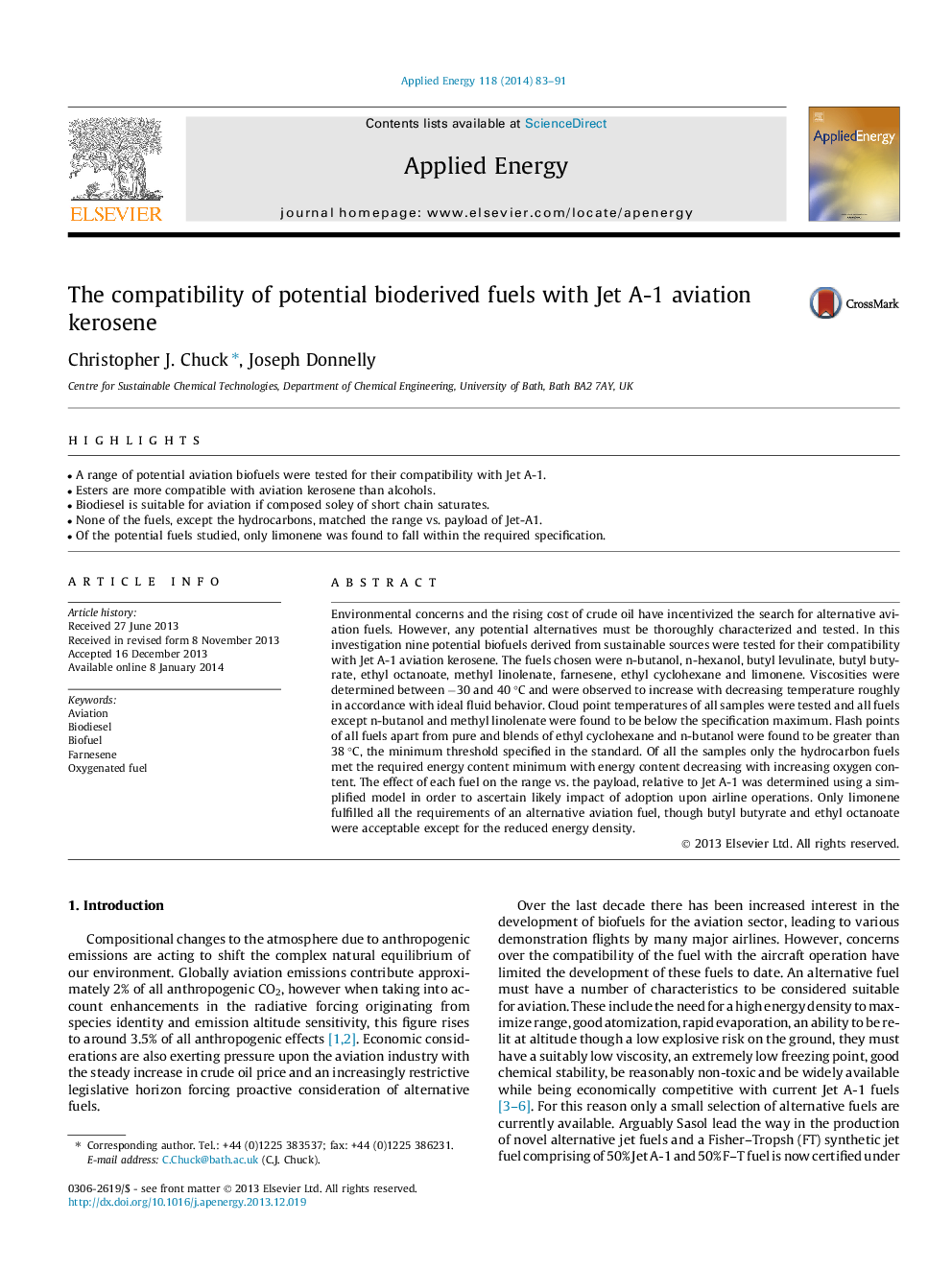| Article ID | Journal | Published Year | Pages | File Type |
|---|---|---|---|---|
| 242851 | Applied Energy | 2014 | 9 Pages |
•A range of potential aviation biofuels were tested for their compatibility with Jet A-1.•Esters are more compatible with aviation kerosene than alcohols.•Biodiesel is suitable for aviation if composed soley of short chain saturates.•None of the fuels, except the hydrocarbons, matched the range vs. payload of Jet-A1.•Of the potential fuels studied, only limonene was found to fall within the required specification.
Environmental concerns and the rising cost of crude oil have incentivized the search for alternative aviation fuels. However, any potential alternatives must be thoroughly characterized and tested. In this investigation nine potential biofuels derived from sustainable sources were tested for their compatibility with Jet A-1 aviation kerosene. The fuels chosen were n-butanol, n-hexanol, butyl levulinate, butyl butyrate, ethyl octanoate, methyl linolenate, farnesene, ethyl cyclohexane and limonene. Viscosities were determined between −30 and 40 °C and were observed to increase with decreasing temperature roughly in accordance with ideal fluid behavior. Cloud point temperatures of all samples were tested and all fuels except n-butanol and methyl linolenate were found to be below the specification maximum. Flash points of all fuels apart from pure and blends of ethyl cyclohexane and n-butanol were found to be greater than 38 °C, the minimum threshold specified in the standard. Of all the samples only the hydrocarbon fuels met the required energy content minimum with energy content decreasing with increasing oxygen content. The effect of each fuel on the range vs. the payload, relative to Jet A-1 was determined using a simplified model in order to ascertain likely impact of adoption upon airline operations. Only limonene fulfilled all the requirements of an alternative aviation fuel, though butyl butyrate and ethyl octanoate were acceptable except for the reduced energy density.
